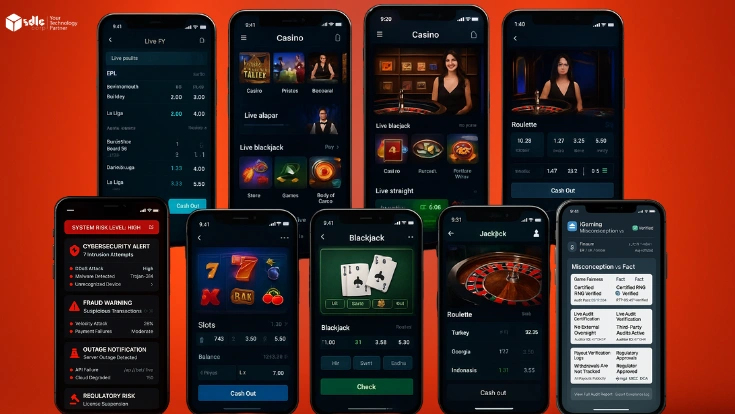The gaming industry has seen exponential growth over the last decade, driven by technological advancements and the rising popularity of online multiplayer platforms. However, a new trend is reshaping the gaming landscape: GameFi, which combines gaming with decentralized finance (DeFi). With the rise of blockchain technology, GameFi presents a revolutionary concept that allows players to earn while playing. On the other hand, traditional gaming remains popular due to its immersive experience, creative storylines, and established infrastructure. This comparative analysis will explore the key differences between GameFi and traditional gaming, including their economic models, gameplay mechanics, and the role of players in each ecosystem.
In this context, companies like a Game Development Company, Blockchain Game Development firms, and Web3 Development Company services are at the forefront of this transformation. These companies offer a variety of solutions, including NFT Game Development and DeFi Development Solutions, helping to shape the future of gaming.
Experience the Next Era of Gaming: Play, Earn, and Thrive with GameFi
Our expert team is here to guide you every step of the way.

Understanding Traditional Gaming
1. Gameplay Experience
Traditional gaming has been around for decades, offering immersive experiences through creative storytelling, high-definition graphics, and complex gameplay mechanics. Games like The Witcher 3, Red Dead Redemption 2, and League of Legends are prime examples of how gaming can engage players with hours of gameplay, complex characters, and dynamic worlds.
Traditional games are either single-player or multiplayer. Single-player games emphasize the narrative, offering players a journey or quest to complete, while multiplayer games emphasize social interaction, team-building, and competition.
2. Revenue Model
Traditional gaming typically follows a variety of revenue models:
- Pay-to-Play (P2P): Players pay upfront for the game, either through a one-time purchase or subscription model. This is common in console and PC games.
- Free-to-Play (F2P): The game itself is free, but players can purchase in-game items or cosmetics via microtransactions. Games like Fortnite and League of Legends use this model, generating billions through in-game purchases.
- Season Passes and DLC: Many traditional games offer downloadable content (DLC) or season passes to extend gameplay, encouraging players to spend money for additional features, new characters, or exclusive content.
While these models have been incredibly profitable for developers, players don’t own any of the in-game assets they purchase. Once money is spent, it cannot be recovered or transferred to another game.
3. In-Game Assets and Ownership
In traditional gaming, players invest time and money to acquire in-game assets, such as skins, weapons, and characters. However, they do not have ownership over these digital assets. The assets cannot be traded, sold, or transferred outside the game’s ecosystem. They are essentially rented goods that exist solely within the game environment.
Understanding GameFi
1. What Is GameFi?
GameFi, a combination of “game” and “finance,” refers to blockchain-based games where players can earn cryptocurrency and NFTs (non-fungible tokens) by completing in-game tasks, challenges, or battles. Unlike traditional gaming, where players spend money, GameFi allows players to earn while they play, transforming gaming into an economic activity.
The core of GameFi lies in play-to-earn (P2E) models, where players are rewarded with in-game tokens or NFTs that have real-world value. These tokens can be used within the game, traded on exchanges, or converted into fiat currency.
2. Revenue Model
The revenue model in GameFi is fundamentally different from traditional gaming, as it operates on blockchain technology and decentralized finance principles. Here’s how the GameFi model works:
- Play-to-Earn (P2E): Players earn cryptocurrency or NFTs through their participation in the game, which can be traded, sold, or used to earn staking rewards. The more time and skill invested, the higher the potential earnings.
- Tokenization: In-game assets are tokenized as NFTs, giving players actual ownership of their virtual items. These items can be bought, sold, and traded across decentralized marketplaces.
- Decentralized Finance (DeFi): GameFi often incorporates DeFi mechanisms, allowing players to earn passive income through staking, liquidity mining, or farming within the game’s ecosystem.
This model empowers players to become stakeholders, creating a player-driven economy that benefits both developers and gamers.
3. In-Game Assets and Ownership
One of the standout features of GameFi is that players truly own their in-game assets. These assets, often in the form of NFTs, are stored on the blockchain, meaning they can be sold, transferred, or traded across different platforms. Players can earn real-world income through their virtual achievements, creating a new dynamic between gaming and finance.
Key Differences Between GameFi and Traditional Gaming
1. Economic Models
- Traditional Gaming: Players typically spend money on games, in-game purchases, or subscriptions without any return on investment. The primary motivation is entertainment and engagement rather than financial gain.
- GameFi: The economic model is centered around financial incentives. Players earn cryptocurrency or NFTs, and the game itself operates like an economic system. The decentralized nature of GameFi enables players to participate in a player-owned economy.
2. Gameplay Mechanics
- Traditional Gaming: Focuses on delivering high-quality graphics, intricate gameplay mechanics, and immersive storylines. Traditional games emphasize the entertainment value, often prioritizing storytelling, art, and character development.
- GameFi: While GameFi games can offer engaging gameplay, they are primarily designed around the play-to-earn model. The gameplay experience in GameFi may take a backseat to financial incentives. However, this is rapidly changing, with some GameFi projects focusing on enhancing gameplay to rival traditional titles.
3. Ownership of Assets
- Traditional Gaming: In traditional gaming, players do not own their in-game assets. Even if players spend significant time and money on acquiring rare items or achievements, these assets remain within the game’s ecosystem and cannot be sold or transferred.
- GameFi: GameFi allows players to own their in-game assets through blockchain technology. These assets are represented as NFTs, meaning players can trade, sell, or transfer them outside the game, effectively giving players financial control over their virtual achievements.
Security and Transparency
1. Traditional Gaming Security
In traditional gaming, centralized servers hold player data and in-game assets, making them vulnerable to hacks or server issues. Players must trust the game developers to maintain the security and integrity of their assets.
2. GameFi Security
GameFi operates on blockchain technology, which offers enhanced security through decentralization. Since assets and transactions are recorded on a public ledger, there is less risk of fraud, hacks, or tampering. Smart contracts automate transactions, ensuring that assets are exchanged securely and transparently.
Community Involvement
1. Traditional Gaming Communities
In traditional gaming, communities are primarily player-driven, centered around fan forums, social media groups, and esports events. Game development decisions are usually in the hands of the developers, with little to no input from the player base.
2. GameFi Communities
GameFi games rely heavily on community involvement. Players can participate in governance, voting on key game decisions, and even influencing the game’s development. This decentralization fosters a more player-centric ecosystem, where players have a tangible stake in the game’s future.
Challenges Facing GameFi
1. Barriers to Entry
While GameFi offers significant opportunities, there are challenges to entry, particularly for new players unfamiliar with blockchain technology. The complexity of setting up digital wallets, understanding cryptocurrencies, and navigating DeFi can be daunting.
2. Regulatory Uncertainty
As GameFi involves cryptocurrency and financial transactions, it faces regulatory scrutiny in many regions. Governments are still catching up with blockchain innovations, and regulatory frameworks for GameFi are not yet fully established, posing risks for players and developers alike.
GameFi blends gaming with real-world rewards, offering players the chance to earn and thrive in virtual economies.

Future Outlook: GameFi or Traditional Gaming?
Both GameFi and traditional gaming have their merits, and it’s unlikely that one will fully replace the other. Traditional gaming will continue to thrive, given its focus on creative narratives and immersive experiences. However, GameFi offers a new paradigm, transforming gaming into an economic activity where players can earn, invest, and even influence the game’s development.
As blockchain technology evolves and becomes more accessible, we can expect to see a merging of the two worlds. Traditional gaming companies are already experimenting with blockchain integration, offering NFTs as in-game items, while GameFi developers are focusing on improving gameplay to attract mainstream gamers.
In conclusion, the future of gaming will likely blend the best of both worlds, combining the engaging storytelling of traditional games with the financial incentives and player autonomy offered by GameFi. The key players driving this evolution include a Game Development Company, Blockchain Game Development firms, and NFT Game Development services. As these entities continue to innovate, DeFi Development Solutions and other Web3 Development offerings will further shape the gaming landscape, creating more opportunities for players and developers alike.

















